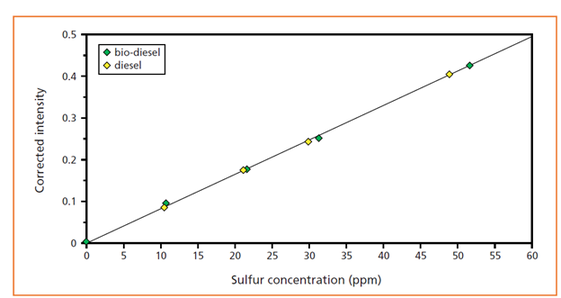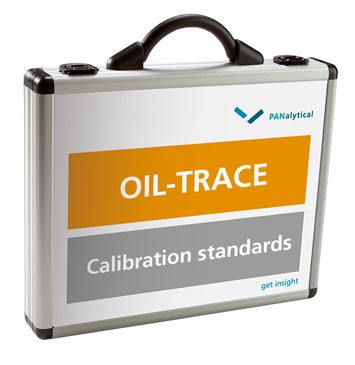For versatile oil and fuel analysis
Analysis of fuels, oils and oil derivatives with X-ray fluorescence (XRF) is well-established and has many advantages. It allows for simple and fast sample preparation and analysis and produces accurate and reproducible results.
For oil and fuel analysis, several international norms and test methods apply that require the use XRF as an analysis technique for various applications.
XRF often requires dedicated calibrations for different types of oils and fuel matrices due to varying oxygen and carbon content of the matrix, which influences the analysis results. Maintaining many different calibrations adds cost and can be time consuming.
Oil-Trace overcomes this problem of varying matrices and takes the XRF method to the next level. It uses an innovative method of characterizing the “dark” matrix, providing a single method that is set for analysis of a wide range of oils and fuels. Based on the latest generation of Malvern Panalytical’s Fundamental Parameter (FP) algorithm, Oil-Trace corrects matrix composition as well as density mismatches between samples and standards. The advantages are a dramatic reduction in the number of calibrations and operational cost savings.

The Oil Trace module consists of:
The Oil-Trace module contains the matrix setup standards, which enables a single calibration to cover multiple matrices. To complete the calibration, standards need to be added which cover the required elements and concentration ranges. Please refer to the section on Oil and Fuel Calibration Standards for an overview of available standards.
Oil-Trace is particularly useful for the analysis of fuels, biofuels and mixtures. For example B20, E5, E85, additives in lubricating oils and wear metals in used oils, S, Ni, V and other restricted elements in crude oils and further, refined oils, chlorine in compressor oils, metals in homogeneous liquid catalysts and troubleshooting for catalyst poisoning. In addition, Oil-Trace fully supports compliancy with international ASTM, API, UOP and ISO standard test methods and norms.
The Oil-Trace module is designed to be used in combination with Malvern Panalytical WDXRF instruments like Zetium and Axios FAST. Certain hardware requirements apply. When combined with calibration standards specific for the elements to be analyzed, the module can be delivered as pre-calibrated solution on new systems or deployed on existing instruments running SuperQ software.
